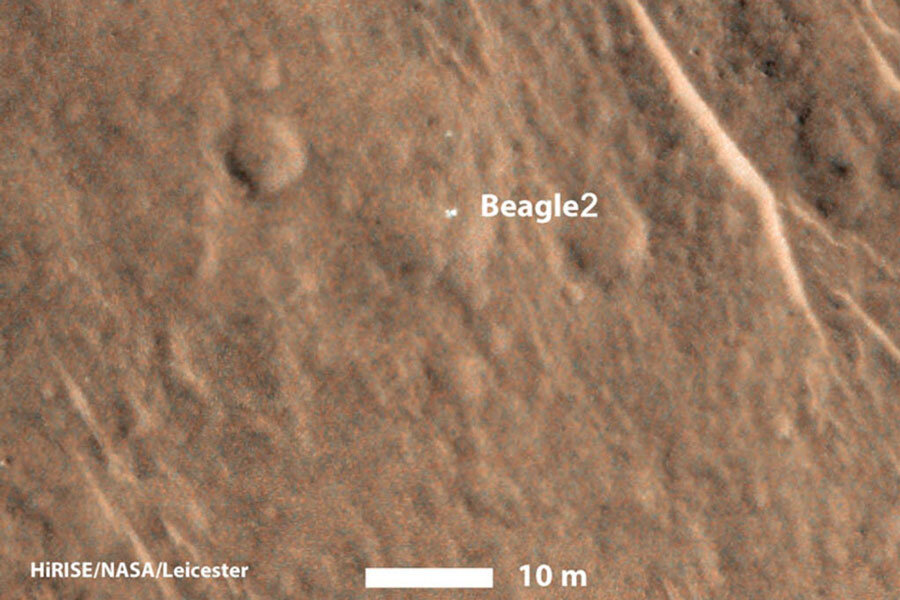NASA's Mars orbiter spots lost Beagle rover, 11 years later
Loading...
ESA, this is Mars Reconnaissance Orbiter: Beagle has landed.
NASA's main eye in the sky orbiting Mars has spotted Beagle 2, a lander that was part of the European Space Agency's Mars Express mission but failed to phone home after it was released for landing on Mars on Dec. 25, 2003.
ESA announced the discovery Friday, following painstaking analysis of photos from the Mars Reconnaissance Orbiter by researchers at the agency's Space Operations Center in Darmstadt, Germany, as well as by teams at NASA's Jet Propulsion Laboratory in Pasadena, Calif.
Although the arrival message is 11 years late, it comes as something of a relief for ESA.
The loss prompted an investigation that identified several possible scenarios for what went wrong. Virtually all of the scenarios involved some type of malfunction with the lander's entry, descent, and landing system.
The images suggest that for the most part, the parachute-and-airbag system worked as planned, depositing the lander at its intended landing site within an impact basin known as Isidis Planitia, near the Martian equator. The ensuing silence stemmed from a hardware problem on the lander.
Images from the US orbiter's HiRISE camera show that Beagle landed where it was supposed to land and that no more than three of its solar panels deployed. The panel or panels that failed to fully deploy blocked Beagle 2's communications antenna, rendering the craft mute.
Given the uncertainty over what happened, ESA officials are elated to finally reach some sort of closure on the lander.
“Not knowing what happened to Beagle-2 remained a nagging worry," said Rudolf Schmidt, ESA’s Mars Express project manager at the time, in a statement. "Understanding now that Beagle-2 made it all the way down to the surface is excellent news.”
The news also was welcome in Britain, where the lander was built.
"This finding makes the case that Beagle 2 was more of a success than we previously knew and undoubtedly an important step in Europe’s continuing exploration of Mars," said David Parker, who heads the UK Space Agency.
The mission, consisting of an orbiter and Beagle 2, launched from Baikanor, Kazakhstan, six months earlier. The orbiter, which is still active, had the hunt for subsurface water on Mars as its primary goal, in addition to mapping the distribution of minerals on the planet's surface. In addition to its science tasks, the orbiter also is serving as a relay station between Mars and Earth for data coming from NASA's rover Curiosity, currently exploring the base of Mt. Sharp in Gale Crater.
Beagle 2, named for the ship that carried naturalist Charles Darwin on his epic voyage in 1831, was designed to hunt for signatures of life, analyze the mineral composition of its landing site, and track Martian weather.






